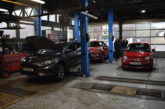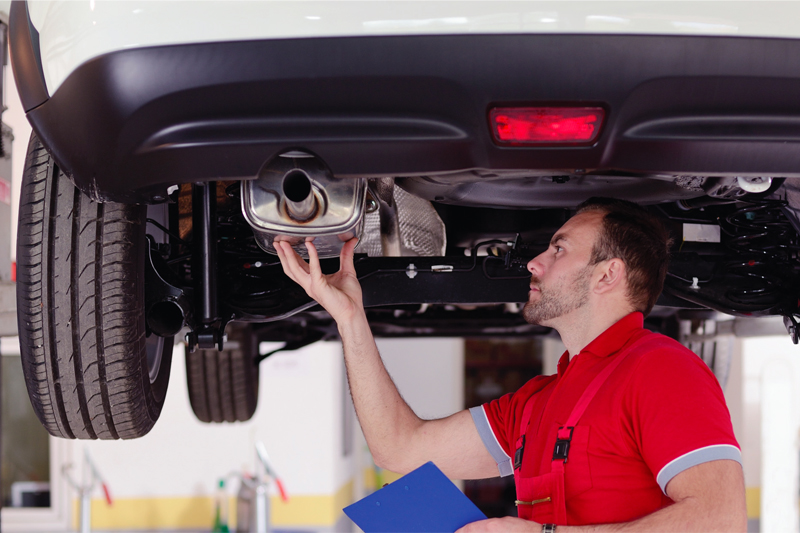
In this article, oil and lubricants supplier Wynn’s explores how to start cleaning DPFs in the workshop using its in-house solutions.
Diesel particulate filters (DPFs) are essential to modern diesel engines, designed to capture particulate matter and reduce harmful exhaust emissions. The filter is positioned in the exhaust and traps soot particles, which are burnt off at high temperatures, regenerating the filter.
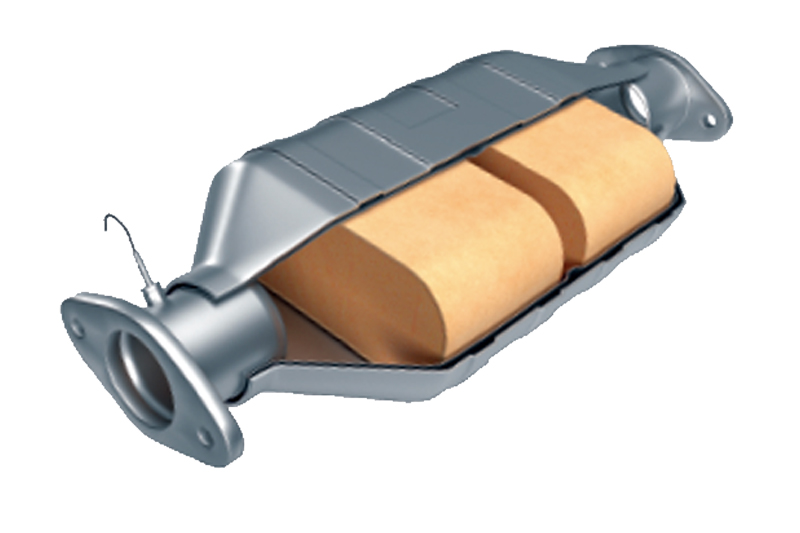
However, many factors can prevent a DPF from regenerating correctly, such as the exhaust not getting hot enough due to short journeys, incorrect oil used, a sticking EGR valve, a faulty turbo, a dirty fuel system or even a low fuel tank. Over time, the DPF can become clogged with soot and other contaminants, leading to increased emissions, poor engine performance and DPF failure.
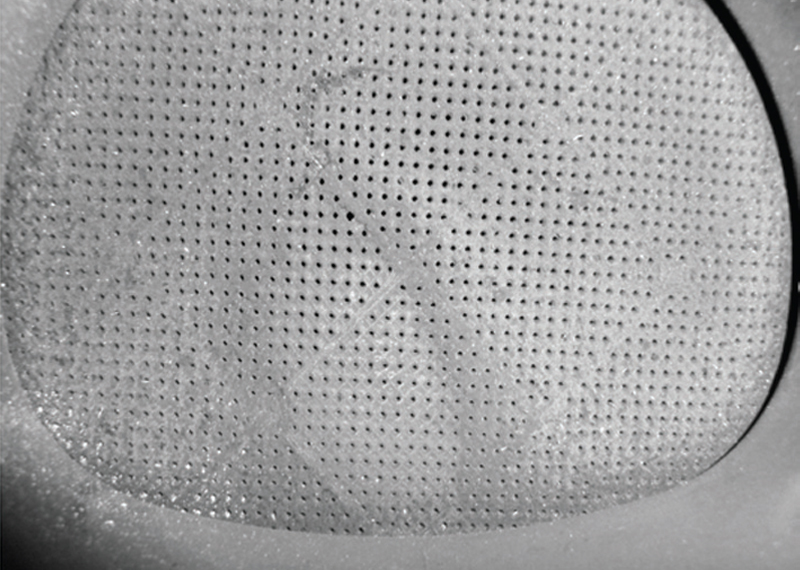
Cleaning and restoring a DPF is now an essential maintenance task for most workshops, leaving technicians with two options for tacklingDPF issues. Send it away to be cleaned or perform the DPF cleaning in the workshop, keeping the revenue in-house and completing the job faster. Have you thought about performing DPF cleans yourself?
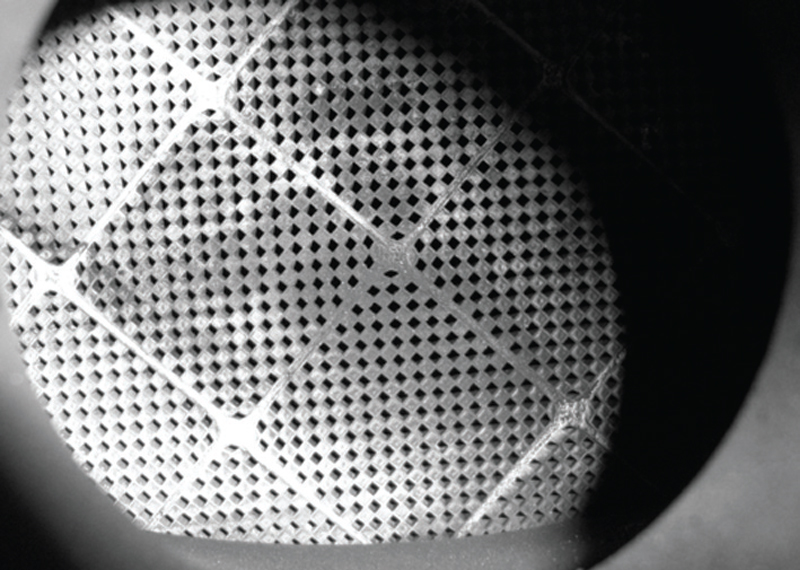
Before we get into the benefits, let’s outline the options for cleaning DPFs. Wynn’s offers three DPF cleaning solutions, but what’s the difference and which one should you use?
When faced with an illuminated DPF warning light, the first action is to check the soot-loading level of the DPF using diagnostic equipment. The soot level will determine which solution to use.
- 0-40 per cent blocked – Diesel particulate filter regenerator is the easiest solution. Pour one bottle into the fuel tank with at least half a tank of fuel and drive the vehicle until the blockage clears (in line with the manufacturer’s instructions). The treatment lowers the temperature at which soot particles burn off, helping to burn off the soot more efficiently and quickly, regenerating the filter.
- 40-70 per cent blocked – DPF and GPF on-car cleaner is designed to clean the filter in situ, without removal. The treatment is applied directly into the filter and is fast and safe to use, with a low-foam and non-flammable formula.
- Over 70 per cent blocked – DPF off-car cleaner should be used if the filter is heavily clogged and standard regeneration methods fail. The DPF must be removed for manual cleaning with the cleaner to safely clean away deposits and restore the DPF in as little as 90 minutes.
When cleaning the DPF, Wynn’s recommends cleaning the fuel and oil system. Use diesel extreme injector cleaner to clean the vehicle’s fuel system, perform an engine flush using oil system cleaner and change the oil and filter. This ensures the fuel and oil system is free from contamination, the engine performance is restored and the vehicle operates efficiently.
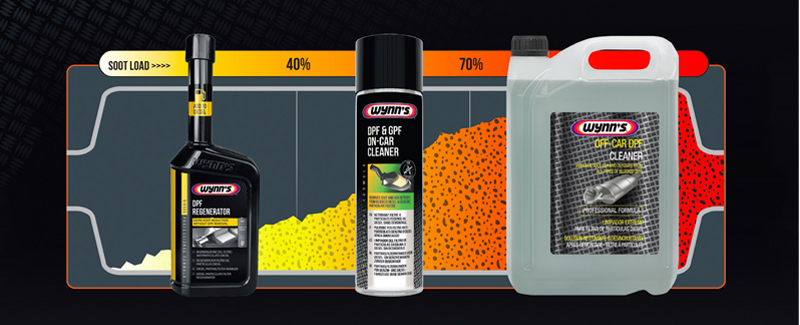
Now that we’ve identified which solutions to use when cleaning the DPF in the workshop, what are the benefits?
- Increase your workshop revenue: The primary benefit of cleaning a DPF in the workshop is the increased profit opportunity. Sending the DPF away can be expensive, so you can save money by undertaking in house.
- Complete the job faster: Time is money. Another advantage of cleaning a DPF in-house is the faster turnaround time. When sending a DPF to be cleaned, you are left with a vehicle in your workshop until the DPF is back and ready to be refitted, which can sometimes take several days. Alternatively, cleaning a DPF in-house can take as little as a few hours, which means you can complete the job the same day with minimal downtime, invoiced and get back to your customer.
- Simplicity: Whether it’s pouring, spraying or soaking, Wynn’s DPF solutions follow a simple process: Clean the DPF (depending on soot load), clean the fuel and oil system and change the oil and filter.
If you start tackling DPF issues in-house, it is advisable to keep all three solutions in stock so you are prepared for any level of contamination.








